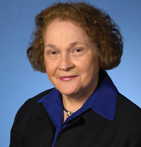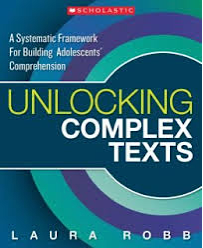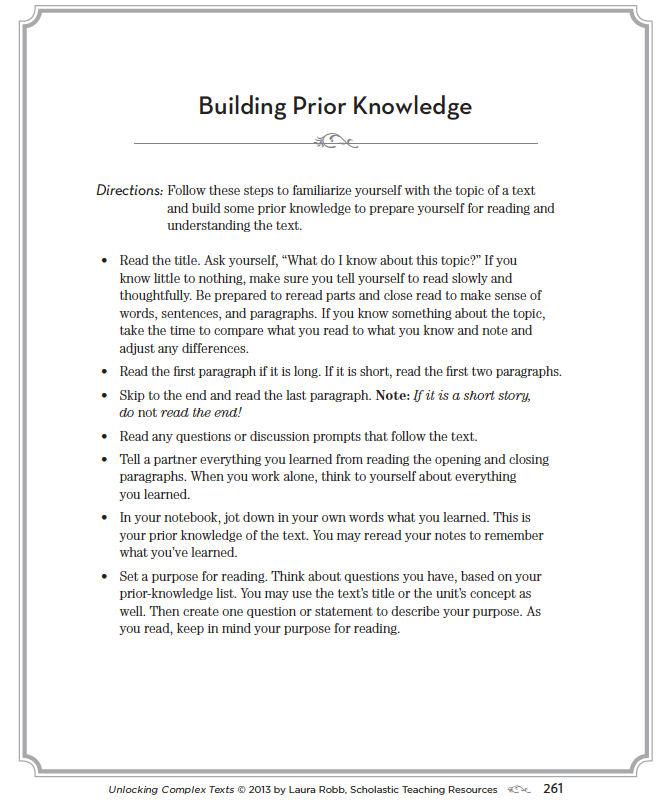Teach Kids to Build Their Own Prior Knowledge
This 2014 article about the “absolute necessity” of helping middle grades readers build prior knowledge remains relevant a decade later. See global literacy leader Laura Robbs’ how-to tips below.
By Laura Robb

In the Common Core era, these three familiar words of advice cause frustration in teachers, and their frustration trickles down to students. Why? Because many state education departments have requested that teachers not build students’ prior knowledge before reading.
The Common Core recommendation that supports this stance is that students need to engage in close reading to comprehend unfamiliar, complex texts. “Let students read a text three or four times—even more if necessary—reading closely until they can unpack its meaning.” That’s the advice teachers hear today.
This strategy, reading without prior knowledge, developed because the Common Core’s goal is for students to be able to read grade-level complex texts by the end of the school year. But it is untenable. As P. David Pearson points out:
“It is not as though prior knowledge was an ‘optional’ cognitive move that one could turn on or turn off at will. A reader cannot build a text base or a situation model without invoking relevant prior knowledge; there is nothing voluntary about it.”
(from “Research Foundations of the Common Core State Standards in English Language Arts, p. 255, In Quality Reading Instruction in the Age of Common Core Standards, Newman & Gambrell, Editors, 2013, International Reading Association).
To Build or Not to Build Prior Knowledge
Catherine E. Snow, professor of education at Harvard Graduate School, calls reading unfamiliar texts with no prior knowledge “cold close reading.”
Dr. Snow tried cold close reading on an unfamiliar topic. Here’s what she said about her experience:
“…cold close reading was often unproductive. It was discouraging. I found I couldn’t read about the unfamiliar topics for more than a few minutes at a time, and that I was exhausted at the end of such efforts.” (Reading Today, June 6, 2013).
If Catherine E. Snow – a brilliant researcher, teacher, and writer – had difficulty with cold close reading because she lacked prior knowledge, why have the framers of the Common Core recommended this reading practice for elementary, middle, and high school students?
Having taught middle school students for more than 40 years, I recognize that if a task is too difficult and the material is not relevant to students’ lives, their attitude becomes “Why bother?”
Moreover, a close reading of the students in any public school classroom across the United States reveals a diversity of experience and reading expertise. Mandates among states for cold close reading not only frustrate and greatly diminish motivation and engagement for grade-level readers, but they are particularly damaging for English language learners, special education students, learning disabled students, and students reading two or more years below grade level.
I am all for raising the bar; I am for helping students think deeply about texts and explore multiple layers of meaning. I am not for discouraging students by pushing them to “read” texts with vocabulary, content, and syntax demands far beyond their instructional reading levels.

For our students, a warm close reading should also mean that they are reading complex texts at their instructional level—texts they can comprehend. Because we teachers know that if students can’t comprehend a text, they can’t learn from it.
Teach Students to Activate Their Prior Knowledge
After Common Core proponents announced that teachers should not spend time activating and/or constructing students’ prior knowledge, I felt frustrated and angry. Why? Because teachers and educational researchers recognize that prior knowledge and experiences, stored in the brain as schema, improve students’ comprehension.
Once my anger and frustration over the CCSS cold close-reading recommendations abated, I directed my energy to developing a method that would put students in charge of activating their own prior knowledge. As I tested the method among students, I learned from their reactions that they prized the strategy because it developed independence and supported the reading they did on mandated state tests.
Tips For Modeling the Prior Knowledge Lesson
Use an anchor or teaching text to think aloud and show students how you activate prior knowledge. Anchor texts are short and relate to the theme or topic you’re teaching. You can use a picture book, a short text such as a myth, or an excerpt from a long text. Throughout the unit, you’ll be able to return to the anchor text to review a skill or strategy you’ve modeled with students.
Follow the steps for activating prior knowledge listed below; you’ll also find a handout for students at the end of this article. I suggest that you immediately engage students in the lesson so they invest in the strategy and listen to your think aloud. Here’s how you can involve students in the model lesson:
- Read the title out loud. Ask: “Do I know anything about this topic?” If you don’t, then tell yourself to slow down the reading and reread confusing parts.
- Read aloud the preview sections: the first two paragraphs and the last paragraph if the text is nonfiction.
- Organize students into partners.
- Have partners turn and talk about all the details they recall from listening to the first two paragraphs and the last paragraph.
- Start writing the prior knowledge notes on chart paper or a whiteboard.
- Ask students to volunteer to add details to the prior knowledge notes.
- Have partners use their prior knowledge notes or the title of the selection to set a purpose for their first reading.
Model the process for students until you feel they can build their own prior knowledge with an instructional or independent reading text. Ask students to turn and talk about details recalled from the preview for three to four months.
Next, tell students that talking to a partner is a dress rehearsal for in-the-head conversations with themselves because that is what they will do on mandated reading tests.
I recommend that teachers stop paired conversations about three to four months before the state tests and have students practice in-their-head discussions independently. (You can also find the following handout on page 9 of this PDF.)
 Closing Thoughts
Closing Thoughts
Students can build their own prior knowledge and set purposes when reading longer texts as well. With fiction and nonfiction, they read the title, study the cover illustrations, and read the first chapter.
Not only does the strategy develop independence with learning, but it also offers students a way to build prior knowledge on a topic they know little to nothing about.

Laura Robb is a Literacy Coach at Powhatan School in Boyce, Virginia where she coaches teachers in grades K to 8. She also teaches students all year in public schools in and around Winchester VA. Robb is a veteran educator with over 43 years of teaching experience to her credit, mostly in middle school. Her many books weave classroom strategies with research-based practices. Visit her website and read her other MiddleWeb articles here.

 “…cold close reading was often unproductive. It was discouraging. I found I couldn’t read about the unfamiliar topics for more than a few minutes at a time, and that I was exhausted at the end of such efforts.” (Reading Today,
“…cold close reading was often unproductive. It was discouraging. I found I couldn’t read about the unfamiliar topics for more than a few minutes at a time, and that I was exhausted at the end of such efforts.” (Reading Today, 



































I concur with this thinking…it’s like we are putting the cart before the horse…teachers are valuable because they are there to instruct…learning is a process that happens over time and making it more difficult or nigh to impossible is counterproductive to what we should be doing.
The fact that we’re even having this conversation shows how disconnected the creators of the CCSS are from the way students (and humans in general) acquire and retain knowledge. Would they endorse handing a loaded gun to someone unfamiliar with weapons and have them randomly point and fire until they figured it out? After 28 years in the classroom I continue to be amazed by how out of touch are the powers-that-be from reality. Thanks for your insightful article.
Once again, this is a pedagogy suggested wo/ classroom experience. Younger learners need background information to learn how experiences may or may not contribute to point of view. The process of reading, synthesizing, analyzing and applying requires previous knowledge and experience. This process can be facilitated by teachers as they watch learners mature, but it is unfair and un-pedagogical to assume that every person starts with the same capacity of evaluation of a “detached text.” As a matter of fact, the AP language tests now include multiple sources with titles and images to allow for multiple formats of knowledge and processing.
This critique is all well and good. But teaching at a high school level, I take the phrase “build prior knowledge” differently. Namely, I see a difference between a “cold close reading” versus giving students the opportunity to rationalize texts on their own terms rather than through preconceived notions. So perhaps Dr. Snow’s experiment was based on a false premise and lacked the proper controls (or this article took her experiment out of context).
Take American History, for example, where much of what students “know” prior to reading a primary source is actually false or misleading knowledge that stems from pre-existing narratives. (The Emancipation Proclamation frequently falls into this category). By virtue of living in America, we all learn things about what is rationalized as a shared past. But is that “prior knowledge” something we should build on? Isn’t there a difference between *building on* prior knowledge versus *unlearning* prior knowledge?
So in this case, I draw a sharp distinction between prior knowledge as a *contextualization* of a text versus prior knowledge as a *pre-existing narrative or rationalization* of a text. Contextualizing a text is a must, but can be done in a way that still gives students critical and interpretive license. But this is distinct from “prior knowledge” that would preclude any original and critical thinking about the text. Or put otherwise, not building on prior knowledge isn’t tantamount to de-contextualizing a text. It’s just an epistemological challenge that in my experience makes learning slower but also deeper.
And in this case I take the absence of a “build prior knowledge” mandate as an opportunity for students to be the authors of history as critical readers and writers, not as an opportunity to aimlessly throw them into the deep end of obscure texts. And it is writing, more than reading, that is missing from this discussion about critical thinking and is missing from this article. Even a “cold close reading” can be made much more fruitful if it is accompanied by a well-crafted writing assignment.
Taken this way, this is pedagogy rich with classroom experience, orchestrated by teachers who are well versed in their disciplines.
It was my interpretation that the Core didn’t necessarily want teachers/students to outright disregard activating prior knowledge. It would be impossible for any reader not to apply some prior knowledge to a given piece of text.
In fact, the method of activating prior knowledge you outlined definitely would assist a student’s navigation through and acquisition of knowledge from a piece of text. Your approach helps students become better independent readers, which is the ultimate goal of the Common Core’s literacy standards and approaches.
I think the intent of the Core’s close readings, however, wants teachers to move past the practice of so much front loading. We’ve all seen/done it at some point—spending a large chunk of a class period to provide notes or lecture on an author’s background and writing style; constantly stopping during the reading of a text to ‘tell’ students how a writer writes; etc.
Teachers still may use various questioning methods to help students figure out for themselves how an author produced a piece of text. It’s just that, through techniques such as the close reading strategy, we need to find ways to make the students responsible for making meaning.
And this doesn’t have to be an all-or-nothing proposition. At times, students should be exposed to true “cold close readings.” Other times, it wouldn’t hurt for teachers to provide a little background knowledge. Just as in real life, we don’t always have someone standing in front of us to front load information for us—though sometimes we do. Therefore, an appropriate approach to literacy instruction should include varying degrees of contextual assistance.
(Posting for Laura Robb)
Dear DJ –
I totally understand your frustration with students coming to the study of a topic with incorrect prior knowledge; I believe most teachers have experienced that. However, my take on building prior knowledge attempts to address that issue.
In the excerpt from my book that comes before “Closing Thoughts,” I outline the process. First, students are building prior knowledge from texts they are using in class—the instructional piece that the teacher provides. This can be a primary or a secondary source; this is building prior knowledge from the text to create an accurate context.
In the first bullet I am careful to ask students to compare what they think they know to the information gained from their preview and make necessary adjustments. The teacher also models this process prior to inviting students to apply the strategy. The goal is to help students evaluate what they think they know.
By eighth grade I’m hoping teachers ask students to read multiple texts on a topic to observe information that’s been omitted in some texts as well as information that differs. I want students to be able to evaluate texts and come to understand that often writers consciously leave out details or alter the intent of the primary source.
A writer’s take, the lens he or she see information through, depends on the writer’s prior knowledge, experiences, and personal beliefs. Critical analysis of multiple texts can enable students to understand this.
To read analytically and critically students must be able to comprehend a text; the research on prior knowledge supports the belief that prior knowledge improves comprehension; prior knowledge includes readers’ past experiences and knowledge and vocabulary related to a topic.
Take P. David Pearson, one of the great reading researchers of our time. Note that in the article above, he states that prior knowledge is not optional: ”A reader cannot build a text base or a situation model without invoking relevant prior knowledge; there is nothing voluntary about it.” The key word here is “relevant” and that’s why I ask students to use the text they are studying to build prior knowledge and compare information read to what they think they know.
The focus of this article was “prior knowledge,” and I have students write prior knowledge notes. If you investigate my work you’ll see that Unlocking Complex Texts asks students to write to argue and explain in each unit. In addition, in my book Teaching Reading in Social Studies, Science, and Math, writing is an integral part of reading.
Which brings me to my final point: with all the educational research available in the 21st century, we teachers should be reading professional books, journals, and articles online with a critical eye to improving instruction.
I am saddened by the implication that I misread Dr. Snow’s article and that her article was based on a false premise. She, too, is one of the foremost educational researchers of our time. I urge you to read the article before judging it.